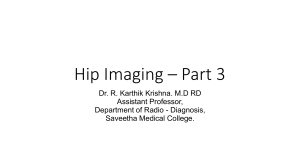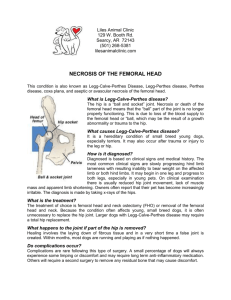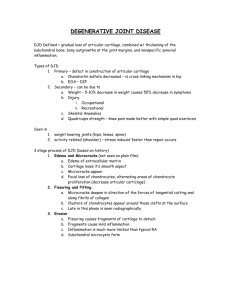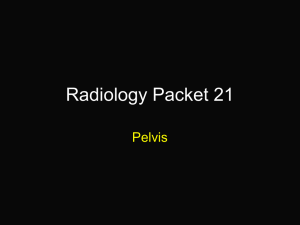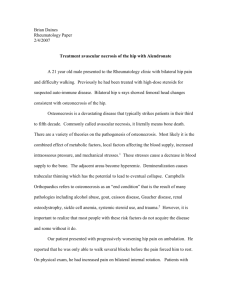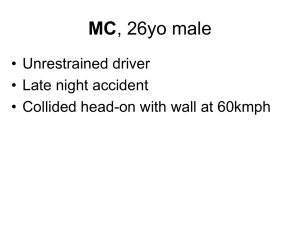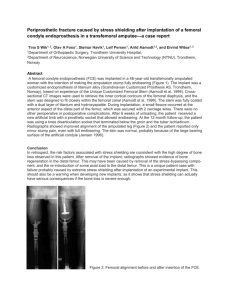Femoral Head Resection
advertisement
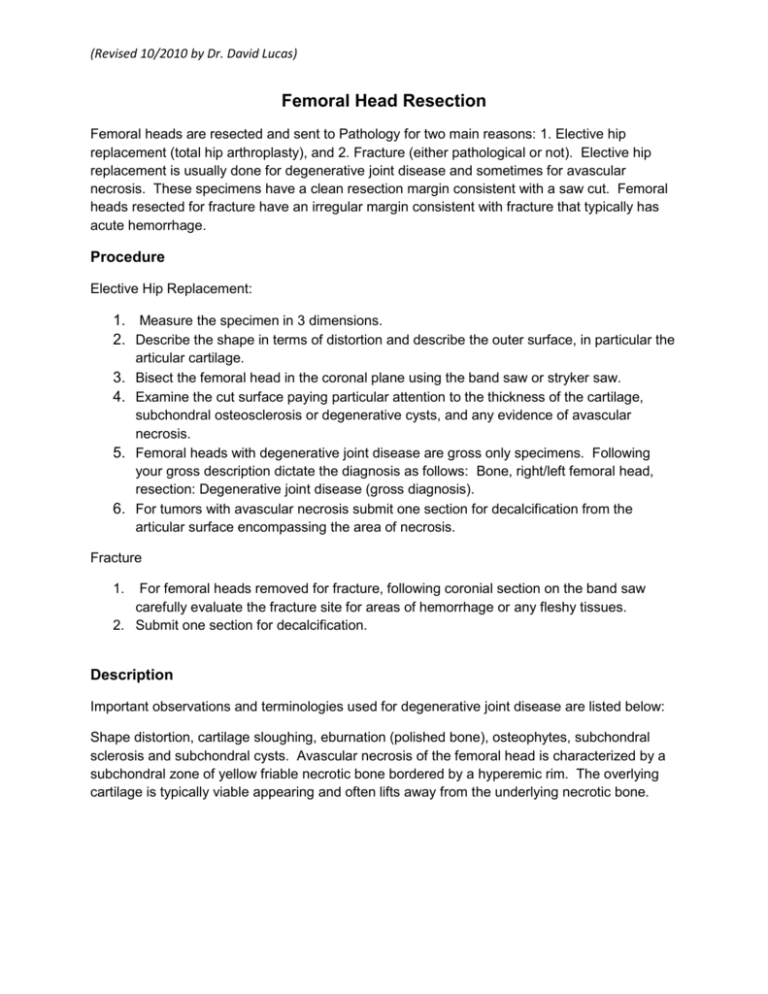
(Revised 10/2010 by Dr. David Lucas) Femoral Head Resection Femoral heads are resected and sent to Pathology for two main reasons: 1. Elective hip replacement (total hip arthroplasty), and 2. Fracture (either pathological or not). Elective hip replacement is usually done for degenerative joint disease and sometimes for avascular necrosis. These specimens have a clean resection margin consistent with a saw cut. Femoral heads resected for fracture have an irregular margin consistent with fracture that typically has acute hemorrhage. Procedure Elective Hip Replacement: 1. Measure the specimen in 3 dimensions. 2. Describe the shape in terms of distortion and describe the outer surface, in particular the 3. 4. 5. 6. articular cartilage. Bisect the femoral head in the coronal plane using the band saw or stryker saw. Examine the cut surface paying particular attention to the thickness of the cartilage, subchondral osteosclerosis or degenerative cysts, and any evidence of avascular necrosis. Femoral heads with degenerative joint disease are gross only specimens. Following your gross description dictate the diagnosis as follows: Bone, right/left femoral head, resection: Degenerative joint disease (gross diagnosis). For tumors with avascular necrosis submit one section for decalcification from the articular surface encompassing the area of necrosis. Fracture 1. For femoral heads removed for fracture, following coronial section on the band saw carefully evaluate the fracture site for areas of hemorrhage or any fleshy tissues. 2. Submit one section for decalcification. Description Important observations and terminologies used for degenerative joint disease are listed below: Shape distortion, cartilage sloughing, eburnation (polished bone), osteophytes, subchondral sclerosis and subchondral cysts. Avascular necrosis of the femoral head is characterized by a subchondral zone of yellow friable necrotic bone bordered by a hyperemic rim. The overlying cartilage is typically viable appearing and often lifts away from the underlying necrotic bone. (Revised 10/2010 by Dr. David Lucas) Subchondral AVN Normal Eburnation Degenerated cartilage Shape distortion Osteophytes “bone spurs” (Revised 10/2010 by Dr. David Lucas) Full-thickness sloughing Subchondral scleosis Cyst Osteophyte Loose body
